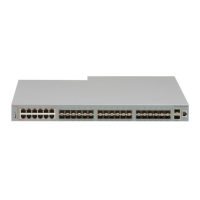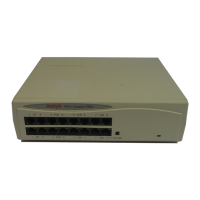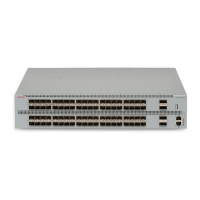Redundant cascade stacking
You can stack up to eight units into a dual-path cascade stack. If any single unit fails, or if a cable is
accidently disconnected, other units in the stack remain operational.
In addition to increasing bandwidth, the software uses the cables to provide two paths between
units. If one path is interrupted, the data travels over the remaining path at half the normal inter-
switch bandwidth.
The following figure shows a typical example of a stack configuration reacting to a failed connection
in the stack configuration.
1. Base Unit
2. Last Unit
3. Unit selector switch
4. Cascade Cable
In the example, the following occur:
• Unit 3 becomes nonoperational due to a unit failure, cable disconnection, or a loss of power.
• Units 2 and 4, directly upstream and downstream from Unit 3, sense the loss of link signals
from unit 3. The software directs all the data to traverse the remaining path.
• The Cascade Down LED for Unit 2 and the Cascade Up LED for Unit 4 turn amber to indicate
an error.
• The remaining stack units remain connected and continue to operate.
Stacking
February 2016 Installing Avaya Ethernet Routing Switch 4900 Series 45
Comments on this document? infodev@avaya.com

